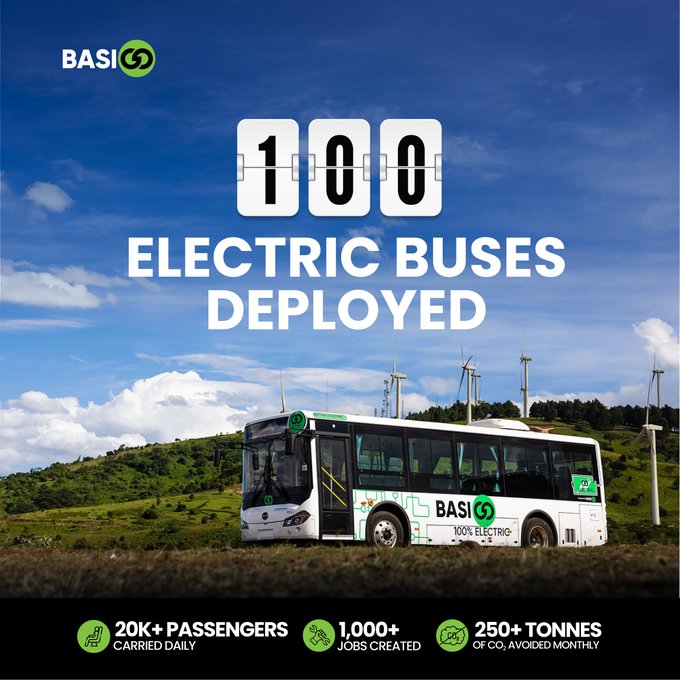Kenya’s Electric Revolution: How E-Mobility Is Powering the Future of Urban Transport

Kenya’s urban transport system, long dominated by fuel-powered matatus, motorbike taxis (boda bodas), and privately-owned cars, is entering a pivotal transformation. Over the past 18 months, a quiet but seismic shift has taken hold—electric mobility is moving from novelty to necessity. This isn’t about a handful of electric vehicles entering the market; it’s about Kenya laying the foundation for a green transport revolution that could redefine city life, climate strategy, and even employment patterns across the country.
This blog will explore how public policy, private innovation, international investment, and local ingenuity are converging to drive Kenya’s electric mobility transition—what’s working, where challenges lie, and what the road ahead looks like.
1. The Urgency Driving Change
Kenya faces rising transportation emissions, urban congestion, and air pollution in cities like Nairobi. Car ownership has grown steadily, yet public transit infrastructure hasn’t kept pace. Matatus and boda bodas remain affordable and practical—but they also contribute disproportionately to urban air quality issues and safety concerns.
At the same time, Kenya has made bold climate commitments: expanding renewable energy, electrifying infrastructure, and reducing carbon footprints. The transport sector, consuming around 40% of the country’s petroleum imports, is viewed as a critical lever for decarbonization.
Fortunately, the perfect storm has arrived:
-
Technological accessibility: E-bikes, electric motorbikes, and small electric vehicles are now cost-competitive, thanks to Chinese and Indian manufacturing that undercuts legacy ICE vehicle prices.
-
Renewable electricity: Over 90% of Kenya’s electricity supply already comes from clean sources—making electric vehicles truly green, not just zero exhaust.
-
Policy alignment: The government is rolling out incentives—from tax breaks to import duty waivers—to encourage uptake, especially for ride-share and public transport operators.
2. Innovation on Wheels: Startups Leading the Shift
Kenya’s private sector has responded rapidly. Dozens of startups now operate e-bike fleets for delivery services, on-demand boda deliveries, and staff commute schemes. One particularly successful model involves offering electric two-wheelers on hire purchase, where small enterprises or individuals pay monthly installments—empowering drivers with cleaner, cheaper, and more powerful vehicles.
Simultaneously, e-matatu pilots are underway in major corridors, testing electric minibuses on high-demand routes. Though still nascent, these trials promise lower operational costs, quieter rides, and a path toward structured fleets and standardized routes. In industrial zones and campuses, electric shuttles—some autonomous—are now ferrying people seamlessly.
Investment is following opportunity. Local VC firms, climate funds, and diaspora investors are backing green transport platforms with seed to Series A rounds. Charging infrastructure is ramping up—fast. Solar-powered charging stations are being installed in peri-urban hubs, and some businesses are integrating e-fleets into microgrid setups.
3. Government Plays a Critical Role
The Ministry of Transport, in partnership with county governments and Kenya Power, has identified e-mobility as a strategic national objective. Recent directives include:
-
Exemption of electric two- and three-wheelers from excise duties
-
Preferential parking zones in Nairobi’s CBD
-
Fast-tracking of vehicle homologation for EV models
-
Support for localized assembly of electric kits, encouraging parts manufacturing and job creation
Counties are also offering “green corridors”—dedicated lanes or charging-permitted zones in pilot cities like Kisumu and Nakuru. While implementation is uneven, the strategy is clear: seed electric transport ecosystems across regions—not just Nairobi.
4. Benefits Beyond the Battery
-
Environmental: Noise and emissions reductions are immediate in dense urban areas.
-
Economic: Operational costs plummet—electric motorcycles cost as little as $0.15 per day to charge versus $3–5 in fuel.
-
Social: Improved income predictability for drivers, less time waiting at queues, and better public health outcomes.
-
Jobs: New vocations emerge—EV mechanics, solar charging technicians, fleet controllers, and EV retrofit companies.
5. Roadblocks and Realities
Despite momentum, challenges remain:
-
Upfront cost: Electric vehicles still require a higher upfront investment—important for drivers with limited capital.
-
Charging infrastructure: Though growing, charging access in many counties remains sparse. Range anxiety still affects long-distance routes.
-
Battery lifecycle: Limited systems for recycling and managing EV batteries could become environmental concerns.
-
Policy consistency: Several incentives are still proposed, not implemented, leaving entrepreneurs cautious.
-
Cultural acceptance: Restoration of pride and reliability in EVs requires consistent messaging, pilot success, and word-of-mouth advocacy.
Conclusion: Kenya at the Tipping Point
Kenya is navigating a defining moment in transport history—not just with pilots, but with scalable ecosystems. If electric mobility continues to gain traction, we could see:
-
Declining air pollution and noise levels in major cities
-
A surge in local green job creation and manufacturing
-
A replicable model for other African countries to follow
Kenya’s e-mobility journey is not without hurdles, but thanks to collective will—public and private—the future of Kenyan transport looks cleaner, smarter, and more inclusive than ever before.